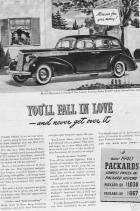|
Re: White wall product inquiry
|
||||
|---|---|---|---|---|
|
Home away from home
|
"
Nitrogen diffuses more slowly through the tire than air" Assumimg that oxygen in the air contributes to yellowing, reducing oxygen permeation of the tire might be expected to retard yellowing.
Posted on: 2023/4/27 15:11
|
|||
|
||||
|
Re: White wall product inquiry
|
||||
|---|---|---|---|---|
|
Home away from home
|
The yellowing is on the outside, which is in normal 21% oxygen atmosphere regardless of what's in the tire. You really think the amount of oxygen making it to the backside of the white strip is going to be a difference maker? I'm willing to change opinion based on data, but it's really unlikely.
Posted on: 2023/4/27 15:46
|
|||
|
||||
|
Re: White wall product inquiry
|
||||
|---|---|---|---|---|
|
Home away from home
|
"Nitrogen diffuses more slowly through the tire than air (which is 79% nitrogen anyway), and is pretty non-reactive with rubber compounds. The more stable tire pressure is with time, not temperature."
If oxygen diffuses through the tire carcass, and if oxygen is a factor in causing yellowing, and if it is the oxygen componnet of air that diffuses most rapidly thorugh the tire carcass, it seems plausible to me that replacing air under pressure in the tire with pure nitrogen under pressure might be expected to reduce yellowing. Notice that in my original post relating to nitrogen, I used the word "might".
Posted on: 2023/4/28 8:10
|
|||
|
||||
|
Re: White wall product inquiry
|
||||
|---|---|---|---|---|
|
Forum Ambassador

|
I suggest that the degree of yellowing of white sidewalls is more related to the tire maker's selection of the white rubber formulation, tire construction including the use of barrier layers, and after mounting the local environmental conditions like UV intensity and duration, atmospheric ozone concentration, etc. than the result of the use of chemical cleaners and tire gloss compounds.
PS. I used Bleche-White and Armorall tire dressing on a set of Lester bias ply tires that I had on my car for nearly 26 years. Tread wear aside, the tire's appearance after all that time defied its age.
Posted on: 2023/4/28 8:53
|
|||
|
||||
|
Re: White wall product inquiry
|
||||
|---|---|---|---|---|
|
Home away from home
|
I think you're correct on that, since some tires yellow very quickly, and others do not.
I've seen some very old wide whites on junkyard cars that have weathered to a pure white. Most seem to yellow or turn brownish and stay that way. New tires have a srtong odor, indicating that volatile substances are evaporating from the tire. With any tire made after WWII, those substances would probably be assorted petrochemicals. Old latex items seem prone to yellowing, and latex diaphragm material/gasket packing definitely yellows, even if kept away from other material. I've found that even blackwall tires lose their new look and strong odor, even when kept in a cool dark place, un-mounted.
Posted on: 2023/4/28 9:44
|
|||
|
||||








